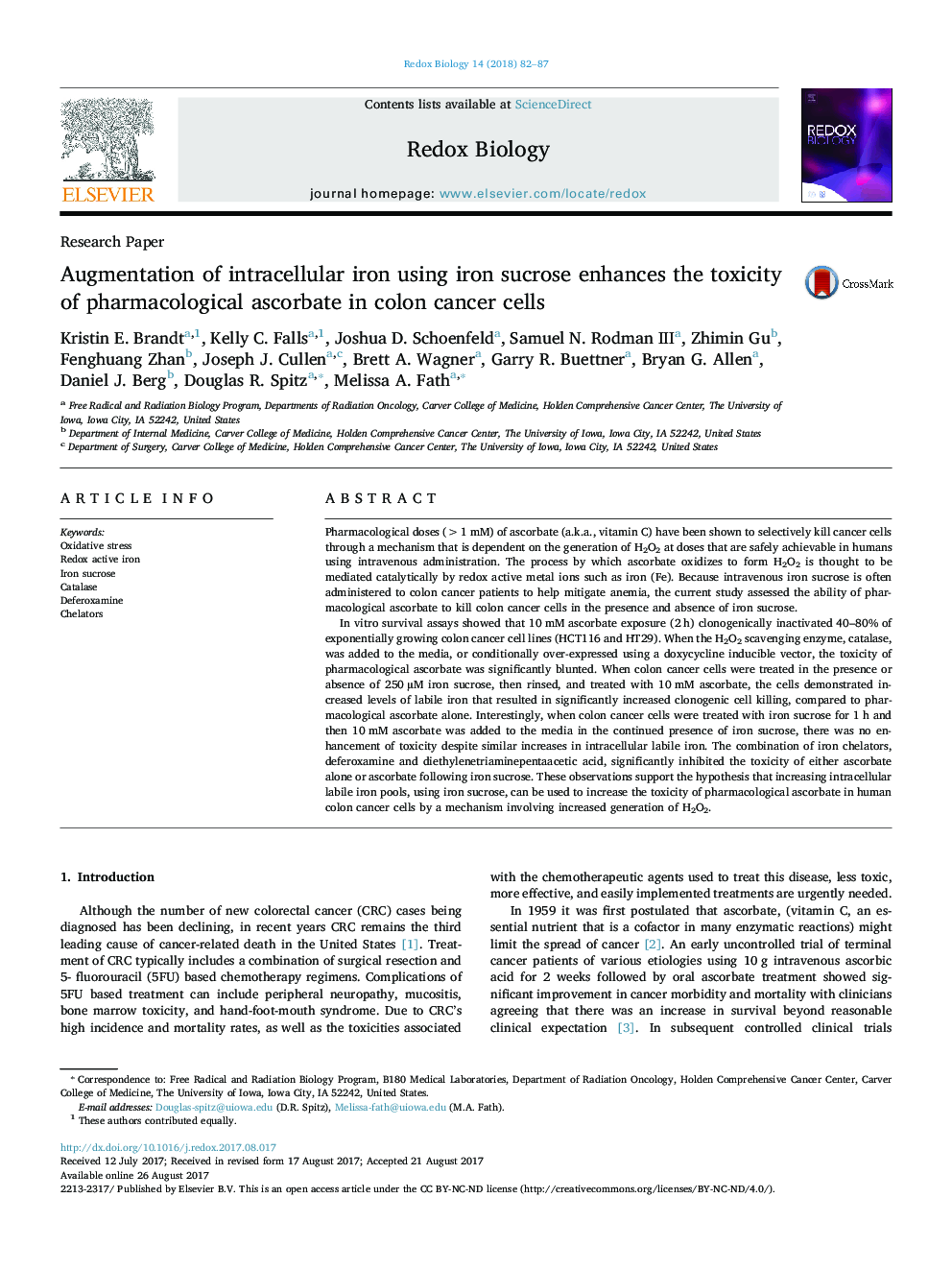| کد مقاله | کد نشریه | سال انتشار | مقاله انگلیسی | نسخه تمام متن |
|---|---|---|---|---|
| 8286749 | 1535836 | 2018 | 6 صفحه PDF | دانلود رایگان |
عنوان انگلیسی مقاله ISI
Augmentation of intracellular iron using iron sucrose enhances the toxicity of pharmacological ascorbate in colon cancer cells
ترجمه فارسی عنوان
افزایش آهن داخل سلولی با استفاده از سس سویا باعث افزایش سمیت آسکوربات فارماکولوژیک در سلول های سرطانی روده
دانلود مقاله + سفارش ترجمه
دانلود مقاله ISI انگلیسی
رایگان برای ایرانیان
کلمات کلیدی
موضوعات مرتبط
علوم زیستی و بیوفناوری
بیوشیمی، ژنتیک و زیست شناسی مولکولی
سالمندی
چکیده انگلیسی
In vitro survival assays showed that 10 mM ascorbate exposure (2 h) clonogenically inactivated 40-80% of exponentially growing colon cancer cell lines (HCT116 and HT29). When the H2O2 scavenging enzyme, catalase, was added to the media, or conditionally over-expressed using a doxycycline inducible vector, the toxicity of pharmacological ascorbate was significantly blunted. When colon cancer cells were treated in the presence or absence of 250 µM iron sucrose, then rinsed, and treated with 10 mM ascorbate, the cells demonstrated increased levels of labile iron that resulted in significantly increased clonogenic cell killing, compared to pharmacological ascorbate alone. Interestingly, when colon cancer cells were treated with iron sucrose for 1 h and then 10 mM ascorbate was added to the media in the continued presence of iron sucrose, there was no enhancement of toxicity despite similar increases in intracellular labile iron. The combination of iron chelators, deferoxamine and diethylenetriaminepentaacetic acid, significantly inhibited the toxicity of either ascorbate alone or ascorbate following iron sucrose. These observations support the hypothesis that increasing intracellular labile iron pools, using iron sucrose, can be used to increase the toxicity of pharmacological ascorbate in human colon cancer cells by a mechanism involving increased generation of H2O2.
ناشر
Database: Elsevier - ScienceDirect (ساینس دایرکت)
Journal: Redox Biology - Volume 14, April 2018, Pages 82-87
Journal: Redox Biology - Volume 14, April 2018, Pages 82-87
نویسندگان
Kristin E. Brandt, Kelly C. Falls, Joshua D. Schoenfeld, Samuel N. (III), Zhimin Gu, Fenghuang Zhan, Joseph J. Cullen, Brett A. Wagner, Garry R. Buettner, Bryan G. Allen, Daniel J. Berg, Douglas R. Spitz, Melissa A. Fath,
